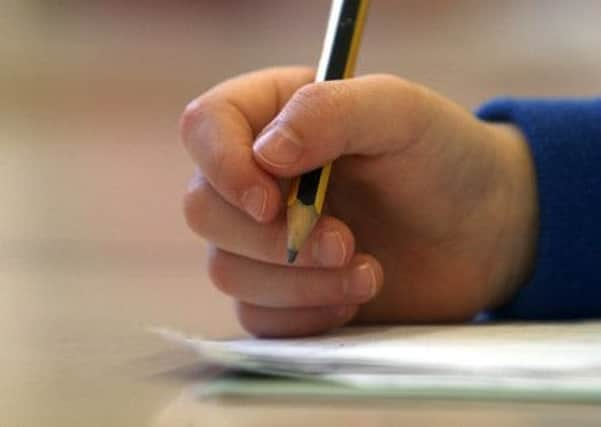Demand for Leeds primary school places at 15-year high


The city will have an estimated 10,500 new starters this year, up from 7,500 in 2001, when the lowest annual cohort was recorded.
Primary school allocations for 2016 will be announced on April 16 and the council’s ‘learning places’ team is currently working hard to ensure every eligible child in Leeds has a reception place in September in one of the five preferred schools their parents should have selected in the application stages.
Advertisement
Hide AdAdvertisement
Hide AdThe Yorkshire Evening Post understands education chiefs are still trying to plug a shortfall of 750 extra places this September.
Though confident that every eligible child will have a place, they admit there are ongoing “difficulties” - and they haven’t ruled out the emergence of new hotspot areas, like parts of North Leeds last year.
Parents in that part of the city successfully lobbied for 90 temporary extra places to be created in three schools to fill what they called a “black hole” in provision. A fourth primary school in the area is also expected to get the go ahead to add an extra temporary class, and a new free school to deal with the additional demand is expected to open next year.
Councillor Lucinda Yeadon, Leeds City Council’s executive member responsible for children and families, said: “As well as the rising birth rate, Leeds has become such an attractive proposition to families and businesses that we are now faced with an unprecedented population increase and a challenge to create enough, quality school places to meet this demand.
Advertisement
Hide AdAdvertisement
Hide Ad“We are dedicated to being able to provide excellent learning places for children of all ages, close to where they live but we are faced with many challenges to overcome before we can achieve this. Not least the £67 million funding shortfall from the money we receive from the Government, as well as the current rules which mean local authorities are not allowed to build new schools.
“As part of the city-wide programme we have already been able to create an additional 1400 reception places since 2009, and I am confident that we will be able to provide the extra places we need by September.
“We have already agreed an additional 465 reception places with governing bodies, and more than 200 places have been secured subject to preference data (from application forms) confirming demand for places.
“Our vision is for Leeds to be a child friendly city and the best place for children and young people to grow up and it is important that we work together to look for creative solutions which meet the needs of a growing city.”
Advertisement
Hide AdAdvertisement
Hide AdThe council’s recent Learning Places for Leeds report, authored by departing deputy director of children’s services Paul Brennan for an internal council inquiry panel, lays out the huge scale of need.
It explains the 2016 year was the city’s biggest ‘birth cohort’ year - the number of four to five year olds who are due to start school.
The report says: “As birth rates fluctuate there is a need to balance carefully the need for temporary and permanent places.
“This is firstly to ensure that the limited capital funding available is targeted appropriately, and secondly to minimise the likelihood of over-provision in an area which then leads to less popular schools becoming vulnerable.
Advertisement
Hide AdAdvertisement
Hide Ad“With 2016 the largest birth cohort to enter reception classes, there is an anticipated city wide need for an additional 750 places.”
A total of 1,400 new primary places have already been created in Leeds since 2009, however expansion is always playing catchup with a growing demand. This is the cumulative and knock on effect of years of rising birth rates, internal and external migration into Leeds and a boom in new homes which attracts more families.
Parental choice is also a further complicating factor.
Education leaders say they are increasingly hampered by Government legislation, which has left the local authority with a £67m funding gap but powerless to build its own schools. Any new schools have to be Government backed free schools, and for every place the Government creates, it deducts funding from the local authority.
Meanwhile a huge rise in construction costs means the council must pay out more for any extra places it creates in its existing schools.
Advertisement
Hide AdAdvertisement
Hide AdThe Learning Places report says “increased complexity of expansion projects and the sharp rise in contractor costs in Leeds” is problematic. “The discrepancy between funding provided by Government and the cost of new places is most noticeable where new schools or large expansions have to be delivered,” it adds. “This appears to be because the DfE assumes that abnormal and site costs will be met by local authorities.”
The report points out that primary school pressures are “now beginning to impact on the availability of secondary school places” and “careful consideration” is being given to capacity in high schools.